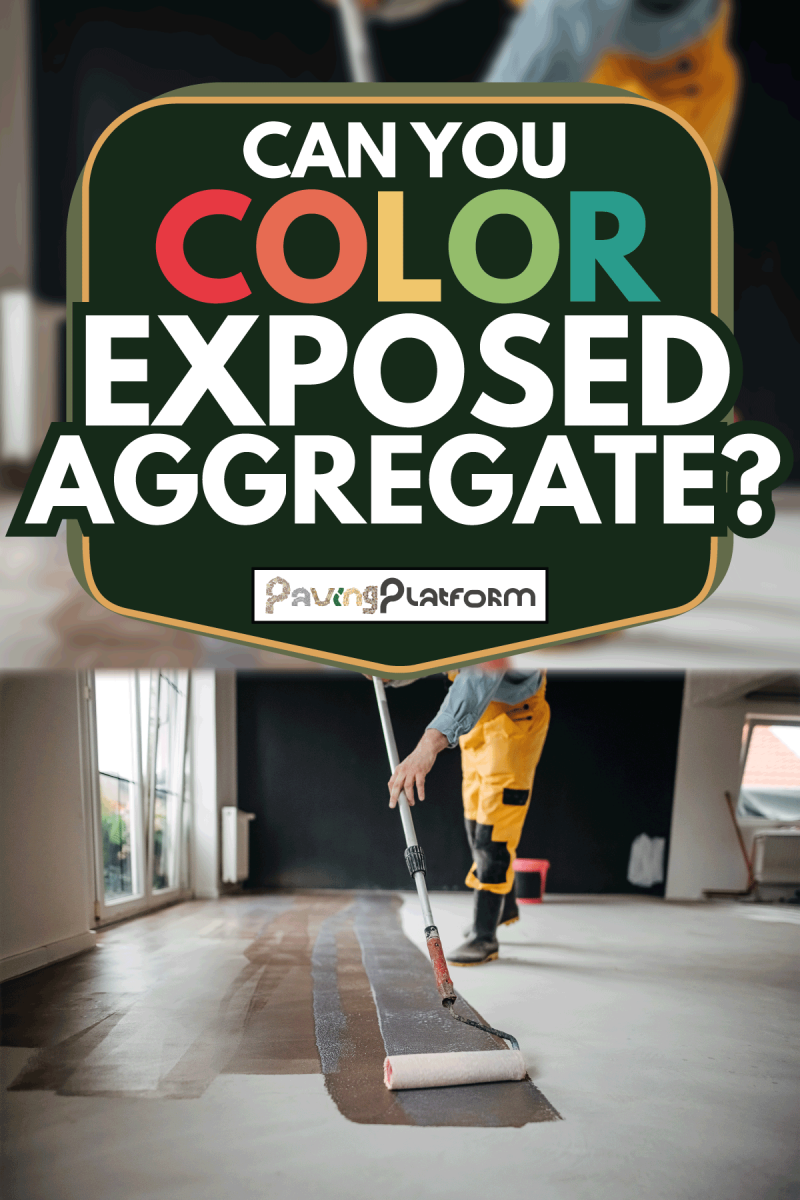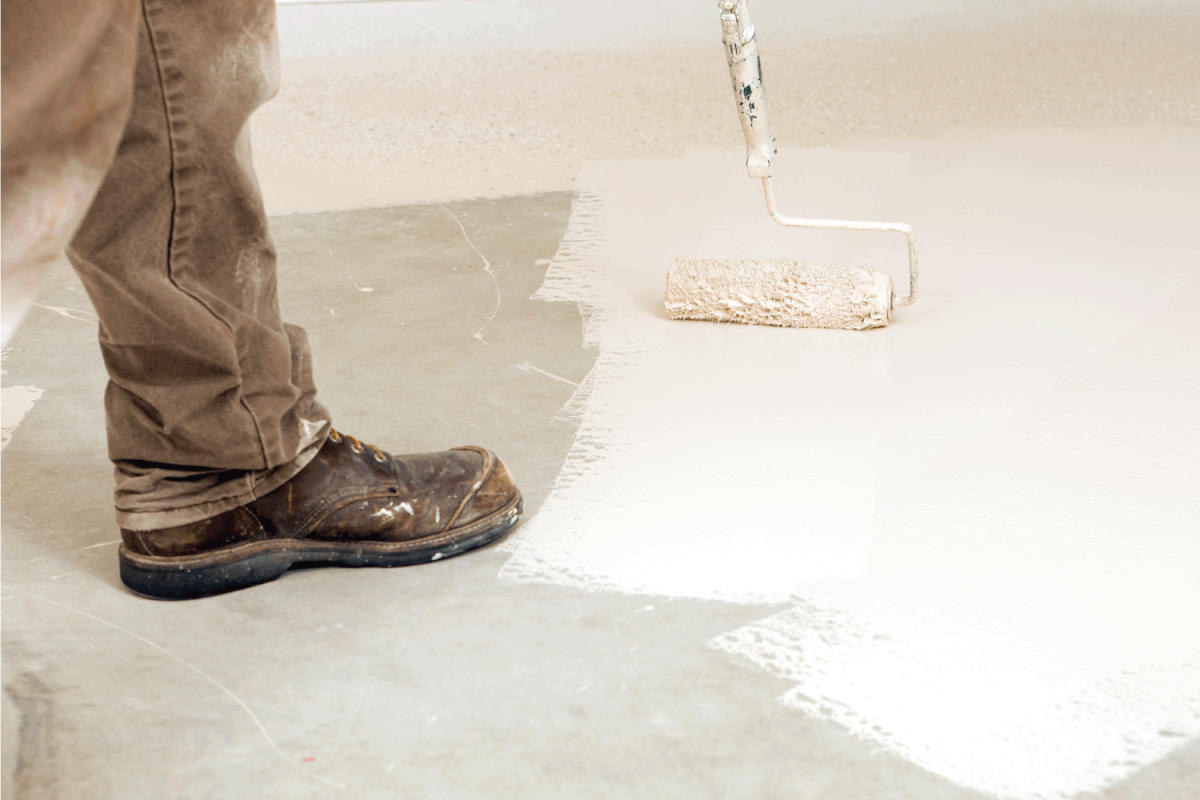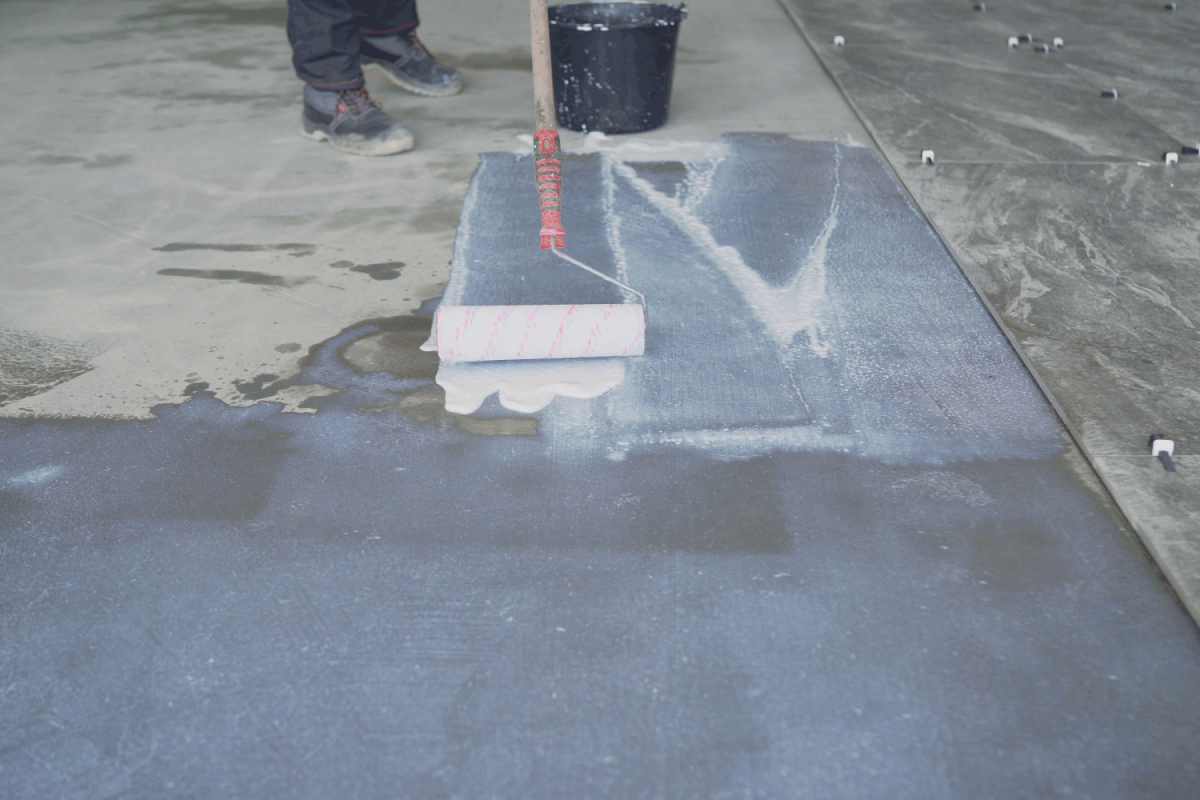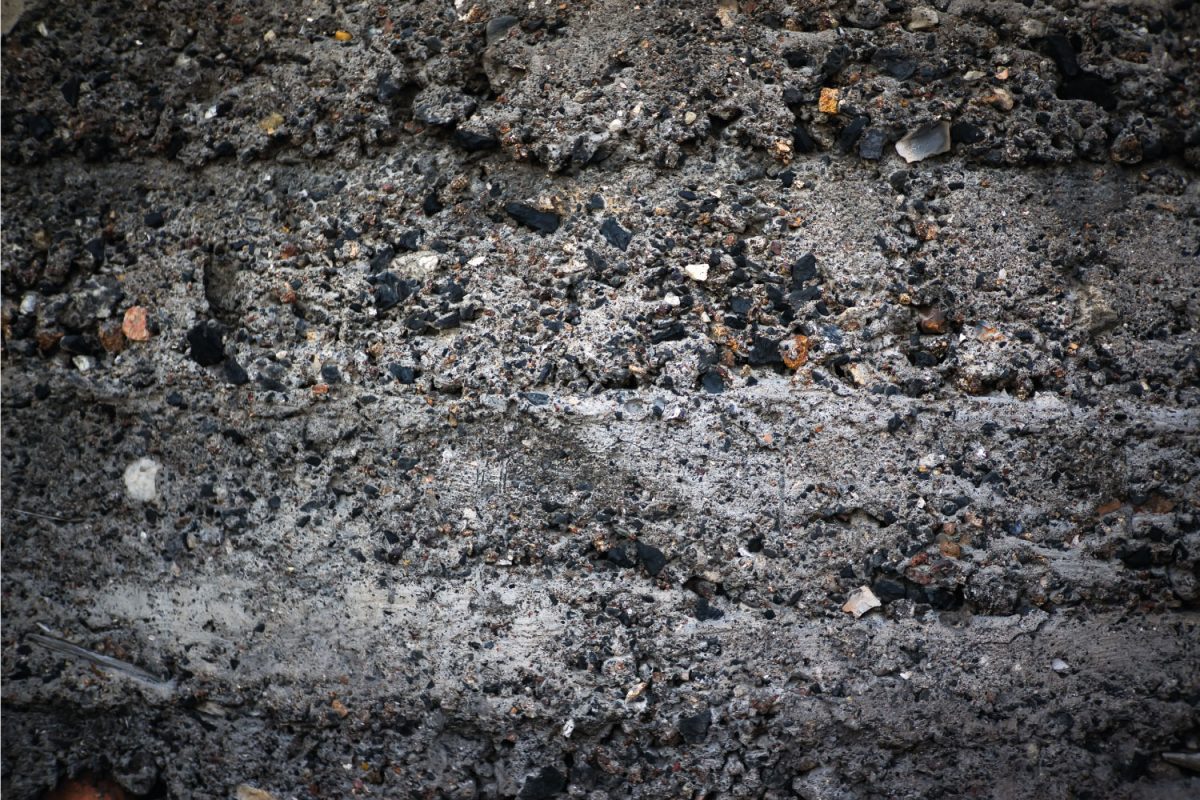Disclosure: We may get commissions for purchases made through links in this post.
Exposed aggregate is only as good as the stone colors last. Once its decorative appeal fades, you might be tempted to revamp it. Most homeowners resort to painting to restore worn-out surfaces. But can you color exposed aggregate? After our in-depth research, here’s what we’ve learned:
Exposed aggregate can be painted to breathe new life into it. But it has to be done correctly. Otherwise, the paint will last only a short time which is going to be a waste of time and money.
In the sections ahead, we break down the types of paint used for exposed aggregate and the procedure for painting it. So keep reading to learn everything you need to know about it.

Is Painting Exposed Aggregate Worth It?
Painting exposed aggregate conceals cracks, fractures, and damaged coarse. Also, it extends the lifespan of the concrete. However, it requires periodic maintenance. It has to be sealed and painted on a regular basis.
Here are some more pros and cons of painting exposed aggregate:
Pros
- Boosts house curb appeal
- Protects the surface from extreme weather and moisture
- Fills holes and crevices
Cons
- Intensive labor
- May require a professional assistant
- Chipping and discoloration over time

How To Color Exposed Aggregate?
Follow the simple methods below to color exposed aggregate:
1. Clean The Surface
- Pressure wash the exposed aggregate with hot water and a commercial degreaser. This softens the stains and grime, so they get washed off fast. You can use a stiff bristle to deal with stubborn oil marks.
- For stains embedded on the aggregate, use a sawdust mixed acetone. Sprinkle it on top of the stain, cover it with old fabric, then let it sit for a few hours. This breaks down and lifts the stain off the surface.
- Repeat the process as necessary. This is not applicable for large stubborn stains. You may want to try a stronger cleaning agent to get rid of them.
- Give it another round of pressure washing to blast away the residue, then allow the paver to dry completely.
2. Seal Exposed Aggregate
Start coating the surface. You can use either a nap roller or floor finish applicator mop, depending on the viscosity of the sealant. Choose the one that covers enough space.
If your pavers have already been sealed before, you can apply less sealant. But if it’s your first time, be more generous with the coating.
Once done, allow the first coat to dry, then re-apply. Some sealants dry in as fast as three hours, but we recommend leaving it overnight.
What Do You Seal Exposed Aggregate With?
The two most popular choices are penetrating and topical sealers. The first one preserves the aggregate and leaves no marks of discoloration, allowing the stones to retain their original color. However, it cannot secure loose constituents.
The latter preserves and holds loose stones together. Also, it provides a glossy finish to exposed aggregate, giving it a reflective look. But it leaves a brownish tint over the surface, concealing the natural appearance of the pavement.
Check out this product on Amazon.
3. Use A Primer
This enables the paint to penetrate deep down into the surface, allowing it to adhere more effectively.
Use a primer that compliments the sealant. A thick nap roller is recommended as it creates a textured finish, ensuring a smoother application in between stones.
Apply the first coating. Once dried, proceed with the second coating. Allow it to dry for at least 24 hours.

Concrete Primers
Acrylic Primer gets absorbed into the aggregate easily, enabling the paint to bond strongly with the concrete.
Check out this item on Amazon.
Polyurethane Primer provides a great grip for the paint to stick extremely well onto the surface. Also, it is resistant to moisture and extreme temperature.
Epoxy Primer is ideal for exterior and commercial surfaces as it has a durability that’s second to none.
Silane Penetrating Sealer protects the exposed aggregate from changing temperatures, surface movement, and chemical reactions.
4. Paint The Aggregate
Acrylic and oil-based masonry paints work well on rough and tricky to adhere surfaces. They transfer and attach to the substrate instantaneously. Also, they are available in a variety of colors.
- Coat the surface. Depending on the tone you are trying to achieve, you can apply multiple times, given that you let the first coatings dry first.
- Give 3 to 4 hours interval in between coating or until the paint dries, so you can manage drips easily. Otherwise; the paint will clump, resulting in a huge mess, and that can be difficult to fix.
- Let the paint cure for one week before walking on it again.

Is Painted Exposed Aggregate Slippery?
Incorrect application of sealant and paint can take away the strong grip and foot traction of the exposed aggregate, making it slippery, particularly when wet. Unless you know what you are doing, it’s best to leave it to professionals.
If ever the surface develops a slippery texture after painting, some things you can do include:
- Using non-grit tape.
- Placing absorbent rugs, mats, or roll in the area.
- Applying non-skid conditioners.
How Long Does The Paint On Concrete Aggregate Last?
Concrete paints last for two to three years. However, this may vary depending on the foot traffic, weather conditions, and humidity level. Exposure to these factors reduces the paint’s durability.
How To Maintain Exposed Aggregate?
Exposed aggregate is resistant to damage, requiring a little maintenance. Other than periodic cleaning, it only needs to be resealed and repainted every two to three years.
How To Resurface An Exposed Aggregate?
If the damage on your old exposed aggregate makes it impossible for the paint to restore its aesthetic, you may opt for concrete resurfacing which is your last resort.
This is done by pouring cement mixed with crushed rocks on the existing concrete. It adds a decorative and unique appearance to the worn surface. Follow the relatively simple tips below for concrete resurfacing:
- Remove debris, oil, and grease with a power washer. They might interfere and weaken the adhesion between the old and new concrete.
- Use an epoxy or concrete patching mix to fill cracks and fractures on the exposed aggregate, then tamp it with a trowel, and let it dry.
- Apply an adhesive and spread it evenly with a roller brush.
- Mix the new concrete with water in the concrete mixture until thick. Pour the substance on the existing concrete and roll it out with a gauge rake. Level the surface with a screed board.
- Scatter the stone on top, then press it down hard enough to embed the pebbles. Allow it to harden.
- Remove the thin layer with a stiff broom to expose the top.
- Once the curing process is finished, add another layer of sealant to fill the holes and make the concrete more resistant to damage.

Conclusion
Exposed aggregate can be painted, but it has to be done properly. Clean the surface first, seal it, then prime it, otherwise; the paint simply won’t adhere and fall off. In any case that the damage on the surface makes it impossible for the paint to fix its aesthetic, you can opt for concrete resurfacing which is the last resort for restoring worn surfaces.
If you liked this post, you might also like:




![Vibrant Red Paver Stone Path, Can You Spray Paver Sealer? [How To Apply It]](https://pavingplatform.com/wp-content/uploads/2022/04/Vibrant-Red-Paver-Stone-Path-600x400.jpg)
![Properly laid out red pavers for a garden, Can You Tint Paver Sealer? [And How To]](https://pavingplatform.com/wp-content/uploads/2022/04/Properly-laid-out-red-pavers-for-a-garden-600x400.jpg)
